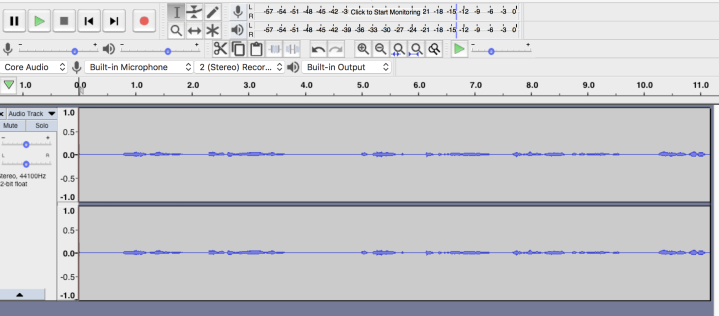
“Your voice sounds even weirder than normal.”
That’s my son talking, razzing my recorded voice again. (Yep, we’ve been here before.) For some reason, my resplendently nasal Northeast Ohio accent shines through especially when recorded.
No, I don’t sit around vanity-recording, but I conduct–and record–a lot of interviews for my job. (Luckily, I’m on the end that talks less.) And, then there’s something new on the creative/publishing front:
I’m recording a flash fiction piece of mine to divert my attention from work for a day submit for publication (and a nice award) to the Missouri Review‘s 11th Annual Miller Audio Prize.
Truly, I thought about having a friend read my submission (talking about you, R.!), which is allowed. This friend is a poet, and so she has had more practice reading aloud (in that soothing NPR announcer kind of way), but she also just has a lovely speaking voice–clear and pleasing to the ear.
Then, I thought, no, this story of mine takes place in my native Cleveland; the characters are Clevelanders. The voice should sound like it.
And so, for authenticity’s sake, I sought out the digital recording and editing app, Audacity. I’m learning to loop sounds for background (of seagulls; yes, we have seagulls–or lake gulls, anyway–on Lake Erie). And I’m re-learning how to cut out the extra-long pauses and goofs and “ums” in a sound file. My only previous experience editing sound files was during an internship with the online journal, Blackbird, in school, which was a long time ago.
What struck me this time around is how instructional it can be to look at the patterns of sound, like here:

The flat lines are pauses between sounds, so I can quickly see when a pause is longer than the others–and decide whether that’s intentional, for dramatic effect, or not. (Like, I was sipping my coffee.) The blips are sounds, and to look at them can help me decide whether my phrases tend to be of the same length–and whether I meant it that way, or not. The higher the blip the louder my voice. Do I get a bit louder at the climax? Or softer? Did I do that on purpose?
This is a work in progress, so I’ll let you know how it goes.
Have you ever tried to see your writing in a different way–by hearing it in a different way? How’d it go?
Ooh that’s different! I’ve recorded on my phone a few times, to listen whilst driving, essays and notes for job interviews etc. It is quite tricky to speak a proper sentence without the errs and ahhs!
LikeLiked by 1 person
It’s pretty fun. And I’m not very tech savvy, but this app makes it fairly simple. Now we know how interviewers and interviewees speak without all the errs, ahhs, and ums!
LikeLiked by 1 person
Black Mountain poet Charles Olsen said he could tell if a poem was good by the way it “sounded” when he typed it. Having typed a lot of poetry, I agree.
LikeLiked by 1 person
That’s so interesting. I can see (or hear) that. You’d get a sense of the rhythm and meter from the sound of the typing keys. Cool!
LikeLike
I agree with you. I love to hear the accents from different parts of the country. I’m from out west, so of course, we don’t have an accent! They way we speak is definitely part of our stories!
LikeLiked by 1 person
Very true. I love accents and dialects. When some of my family moved out west when I was a kid was the first time I heard someone say, “Are you coming with?” instead of “Are you coming with me?” Maybe I hadn’t paid attention before, but I remember thinking, Wow, it’s a big world of words out there!
LikeLiked by 1 person